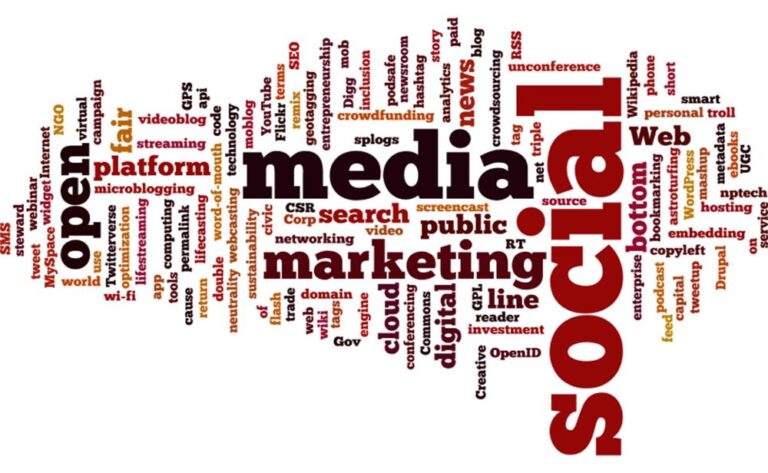What is Digital Transformation? A Guide for Businesses
The Covid-19 pandemic compelled a great number of businesses across all sectors to speed up their digital transitions in order to compete and possibly even to survive.
The level of digitalization that a business is able to achieve is directly proportional to its chances of commercial success in today’s increasingly digitalized globe and among its own customers. This is true for both business-to-consumer and business-to-business transactions because of the shifts that have taken place in consumer habits, the consumption of knowledge, and business procedures.
According to Statista’s projections, spending on digital transformation technology and services will reach $1.8 trillion in 2022 and will rise to $2.8 trillion by 2025. This figure is expected to continue rising. This growth is evidence of how much money businesses want to invest in order to remain competitive.
The question now is how your company can drive the transformation necessary to be where its customers already are. And what specific measures are various business sectors employing to assure their continued existence in an increasingly digital world?
Within the confines of this blog, we will delve into the ins and outs of digital transformation by investigating the following topics:
• Definition of digital transformation
• Methods for achieving digital transformation
• Digital transformation examples
• Digital transformation benefits
• Digital transformation examples
• Digital transformation trends
• Digital transformation blunders
Digital transformation definition
The question now is, what exactly is digital transformation? If you use Google to search for the answer to that question, you will see billions of answers. There is a common misunderstanding that digital transformation only refers to technological advancements; however, this is not the case.
A digital transformation is a fundamental shift in how an organization runs its business, communicates with its employees and partners, and interacts with its customers. The “traditional” mode of conducting business is being challenged by the transition toward a more digital mode of operation. Because a transformation is something that must be accomplished by a group effort, it is also important to develop a digital culture within your organization and improve the skills of its employees.
To paraphrase the words of Brian Corish, Managing Director of Accenture Interactive, “Digital transformation is nothing less than redesigning the business model.” It’s reinventing processes”
What’s the difference between digitizing something and digitalizing it, and transforming it into a digital format?
Because there are so many different terminology used in connection with digital and business, it is simple to get them mixed up. The terms digitization, digitalization, and digital transformation are the ones that are utilized the most frequently. Let’s look at each of them to notice the difference.
• The process of converting anything into a digital format or creating something in a digital format is referred to as digitize or digitalization. For instance, if you develop an online version of a printed newsletter or magazine, or if you use an electronic signature when signing documents online, these are examples of online adaptations of traditionally printed materials.
• Changing your company model with the use of digital technologies in order to generate a new source of revenue is one definition of digitalization. To become a digital business, it is necessary to make use of the tools and avenues provided by the internet. Using cloud computing to store data or automation to streamline workflows are two examples of how this might be done.
• The move to digital is a process of inventing new things. It investigates the use of digital technologies and processes to construct new systems, nurture a digital mentality, and take advantage of new opportunities.
Types of digital transformation
Although the focus of many firms is on organizational transformation, there are four distinct types of digital transformation that you need to take into consideration in order to extract the maximum benefit from it. These are the following:
• Process Transformation: This focuses on your processes such as data, analytics, artificial intelligence, and any other process that can work towards cutting costs and driving operational efficiency in the firm. It is an excellent illustration of this that the healthcare retail giant Walgreens redesigned its MyWalgreens app in order to concentrate its digital assets and give a better experience for its customers.
• Business Model Transformation entails making fundamental changes in the way a company or organization operates, which may involve personnel, procedures, and technology. This type of transformation can be a significant undertaking. Consider the juggernaut that is Netflix, for instance, and how it completely disrupted the video distribution sector by flipping the business model on its head. Netflix is responsible for this revolution.
• Domain Transformation – This area provides a fantastic opportunity for a company to move into a new domain or area that the company may not have previously investigated by purchasing new technology. This can be a very beneficial move for a company. Think about Google and all of the other businesses that it has spun off, such as Google Nest, which is an Internet of Things (IoT) product that offers thermostats and smoke alarms for the house.
• Transformation of Culture and Organization: This involves rethinking mindsets, procedures, competences, and skills in order to adapt to a digital world. It’s all about accelerating the digital transformation process through new growth initiatives that are rooted in a different culture and way of thinking. Pitney Bowes is a fantastic illustration of this as it transitioned from a company that provided postal solutions to a company that provided technology for shipping and ecommerce and ultimately changed into a digital corporation.
The Digital Transformation Process in 6 Steps
Because digital transformation is a lengthy and intricate process, it is essential to adopt a strategic strategy from the very beginning of the process. This indicates that you should construct a framework for digital transformation so that you can always return to a phase to see whether or not it can be improved upon. The following six steps are the most important ones:
1. Be conscious of the reasons behind your actions.
Understanding the reasons behind the shift toward digitalization is an essential component of the digital transformation process. Because no two organizations are the same, it is imperative that you understand the motivation for your company’s decision to embark on this journey.
Consider the fundamental motivations behind your decision to change. Is it to provide a better experience for your customers, to make your processes more efficient, or to better manage your data? When you are aware of the factors contributing to the problem, you may formulate a strategy to address it going forward.
2. Carry out an investigation on your business.
You can’t possibly know where you need to go unless you first understand where your firm stands right now. Examine the current procedures and infrastructure, paying particular attention to how well everything is running. If you are making use of digital tools and technology, what exactly are they, and do you find that they are effective? Investigate the inner workings of your company, as well as its organizational structure and business practices.
3. Determine the voids in your knowledge
You have identified inefficiencies in the operation of the business as well as opportunities that you have not yet exploited, which is why you are looking into driving digital transformation. Where are the holes that need to be filled? For example, are you extracting value from your consumer data? Do you have a system in place that allows you to interact with and keep the leads that come into the business? How consistent is the experience that your customers have across different channels?
4. Evaluate the resources available inside your organization.
This stage is not about looking at your technology; rather, it is about evaluating your abilities. There is no point in modernizing your company if you do not possess the digital skills necessary to direct the change. What kinds of digital talents are necessary to propel transformation, and does your firm already possess any of them? Do you offer a training program that can improve the digital abilities of current employees so that they have either essential digital skills or at the very least digital literacy?
5. Formulate a plan for the digitalization of your business.
After you have gained an understanding of your business’s motivations, skills, and weaknesses, it is important to design a digital transformation strategy that can serve as a roadmap for your company. This should serve as a path for you to follow, and it should be related to key performance indicators (KPIs), and there should be a finance plan in place.
6. Evaluate and reevaluate; demonstrate flexibility!
Your approach for digital transformation should not be set in stone at this point. Because the digital and consumer ecosystems are in a state of perpetual flux, it is essential to leave room in your schedule for the possibility of revising your plan in response to causes either external or internal. In order to successfully navigate this kind of shift, agility is absolutely necessary, and your firm needs to be ready to pivot and react on the fly if necessary.
Three Excellent Illustrations of the Digital Revolution
There are a number of fantastic instances of companies that are doing an excellent job at digital transformation. Here are three well-known firms that are successful in their respective industries to serve as examples of what is possible and inspire you.
Domino’s
Domino’s Pizza, a well-known pizza franchise that first opened its doors in the 1960s, has transitioned into what it calls a “truly digital-first business.” According to Marketing Week, in 2021, digital platforms were responsible for 91 percent of the company’s total sales.
2011 marked a turning point for the brick-and-mortar company, which had been on the verge of collapse just a few years earlier. When the company’s previous CEO gave the IT department a job, he instructed them to make it simple for any customer to place an order for pizza in the 17 seconds it takes for a traffic light to turn green.
The Domino’s app was developed (which caused a disruption in the restaurant industry), and now, thanks to the incorporation of e-bikes and autonomous delivery, the company has become one that generated revenue of $4.36 billion in 2021. Delivery has also become significantly simpler.
Nike
The swoosh emblem used by Nike, which is one of the most successful companies in the world, is instantly identifiable. However, in order to maintain their market share and meet their customers where they were—online—even Nike was forced to undergo a digital makeover.
Nike had a mentality shift, which led to significant changes in the company’s supply chain and brand as a whole. The company refocused its efforts on developing more effective data analytics, modernized its approach to online commerce, created effective digital marketing initiatives, and increased the percentage of sales made directly to customers. In 2018, there was also an increase in the number of membership opportunities available, in addition to the testing of concept stores.
Additionally, the company makes efficient use of social media in order to raise awareness of the brand, engage customers, and promote the social projects it undertakes in order to develop a community. Athletes are being encouraged to learn more about mental health through a series of tweets that are being made on Twitter.
Matt Friend, the Chief Financial Officer of Nike, made the following statement: “Consumers continue to gravitate toward digital to find the items they love, and NIKE’s digital experience continues to establish deep consumer connections and grab digital market share over the past four years.”
IKEA
IKEA is a household name for everyone who has ever shopped there for home furnishings. The company was established by Ingvar Kamprad when he was just 17 years old, and it has since grown to become one of the most successful brands that is not scared of innovation.
Its transition to digital has always been aggressive because the company seeks all the time to leverage various technologies and channels in order to engage customers and boost sales. It takes an omnichannel approach to customer service, which allows customers to quickly transition from one channel to another.
IKEA made the conscious decision to stop publishing its well-known print catalog, which resulted in a reallocation of investment funds to other areas. As a result of IKEA’s acquisition of Geomagical Labs, clients will have the ability to generate a 3D depiction of a room, “remove” any existing furniture, and digitally insert new items into the space. In addition, the company intends to launch a payment service known as “Shop and Go,” as well as a geolocation system for products sold in-store and chatbots to facilitate easier customer support.
Explain how COVID sped up the process of digital transformation.
During the Covidian-19 pandemic, purchases through e-commerce skyrocketed. In 2021, customers in the United States spent $870 billion online, which is a 14% increase from their spending in 2020. According to research conducted by Digital Commerce 360, online retail sales would not have reached that level until the year 2023 if the pandemic had not occurred (two years later).
Because of the epidemic, businesses have resorted to using digital technologies and networks in order to communicate with and assist customers. This required firms who already had an online presence to scale up their operations in order to satisfy customer demand. Those that had only recently begun their road toward digital transformation were forced to make an unanticipated turn as a result of this.
According to the findings of a survey conducted by McKinsey Global on CEOs, businesses have slashed three to four years off the timeline for the digitalization of their customer and supply-chain contacts as well as their internal operations. In the meantime, the percentage of products that are either digital or digitally enabled has increased by seven years.
A number of other significant shifts occurred within businesses during this time period, including the rise of remote work (including the meteoric rise in the number of people working as digital nomads across cities), the evolution of customer requirements and preferences, and the migration to the cloud. According to the findings of a survey conducted by McKinsey, many executives feel that these improvements would be maintained in the company.
In the end, the epidemic has given businesses of all different kinds a new method of doing their operations.
Transformation of all industries by digital means.
There is not a single sector that has been exempt from the impact of digital transformation. Companies in many kinds of industries are investing in digital transformation in order to integrate digital into their business practices and culture so that they can better serve their consumers and compete.
Let’s take a look at a few different sectors to determine the regions undergoing change and the directions future trends will go.
The application of digital technology to governing
Because maintaining confidentiality and complying with rules is essential in this industry, the transition to digital platforms has been a slow one. According to a report compiled by Deloitte, only thirty percent of the businesses polled rated their digital skills as being superior to those of their peers in the private sector, while seventy percent claimed they lagged behind those in the public sector.
The following are some of the issues that governance is facing as a result of digital transformation: data gathering and preservation; information sharing; siloed strategies; cost and budget pressures; a culture that shies away from risk; skills gaps
To get beyond these obstacles and become more of a digital sector, the following things are essential: a transfer to the cloud; secure access to communications; cross-functional information sharing; and digital skills training.
The adoption of digital technology in healthcare
By 2025, it is anticipated that the global market for digital health will have increased to more than $500 billion, with health information technology accounting for the greatest part. During the process of its transition, the industry is confronted with a variety of issues, including the following:
• Patient delivery and service
• Privacy
• Collecting and managing data
• Increasing the efficiency of medical treatment
The pandemic, on the other hand, has hastened the pace of change in this industry as a result of shifting consumer preferences and innovations in care delivery. Some of these innovations include: remote patient monitoring; AI-based automation, such as image-guided therapy; tele-intensive care units; and tele prescribing.
Financial services and banking are undergoing a digital change.
According to EY’s Digital Survey, whereas 92% of finance leaders have begun their path to introduce digital interventions, only 11% say they are at an advanced stage.
The safeguarding of sensitive information and data is one of the problems that the financial industry must contend with.
• Real-time data analytics and management
• Compliance and privacy standards
• Management reports
• Transaction accounting
Initiatives for digital transformation to improve both the customer experience and the level of security will begin to roll out as early as 2022 and continue well beyond that year.
• Contactless financial transactions
• Enhanced customization
• Top-Notch Applications
Large technology companies such as Google and Apple are ramping up their involvement in the industry.
The adoption of digital technology in manufacturing
With growing investment on IoT, the market for digital transformation in the manufacturing industry is projected to reach $767 billion by the year 2026.
The following are some of the issues that this industry faces:
• Big data and data analytics
• Real-time data
• E-commerce, including business-to-business transactions
This industry, like the financial sector, had to speed up its digital transformation during the pandemic and ramped up activities in certain areas to make improvements, such as: • Robotics • Augmented Reality for Assembly Lines
• 3D Printing
• B2B Electronic Commerce
• Internet of Things for Real-Time Data
The transformation of small businesses by digital means.
According to the report titled ‘2020 Small Business Digital Transformation,’ 72 percent of small enterprises are speeding up their rate of digitalization in order to meet the difficulties of COVID-19.
In contrast to giant organizations, small firms have the advantage of being able to use their size to their benefit. This may make it easier to create changes in the mindset of the firm, enabling customized training programs that focus on critical areas, and witness the instant impact that digital technology and initiatives have. The following are some of the problems that face small businesses today: • Enhancing operations and service delivery
• Improving customer experience
• Expanding into new markets
• Sales and marketing
• Sourcing talent
To counteract this, however, plans are being developed to:
• automate or digitize operations;
• invest in human capital and digital capabilities;
• improve online sales and digital payment methods
The adoption of digital technology within HR
By 2028, it is anticipated that the HR market would reach a value of $43 billion. The implementation of HR software is the primary factor behind the expansion. This industry is faced with the following challenges:
• Increasing efficiency
• Optimizing the employee experience in the workplace
• Improve the skills of employees and develop them further
• Automate workflows
• Manage talent
The human resources industry around the world is attempting to overcome these challenges by implementing new methods of work, such as remote and hybrid employment, digital learning platforms, social talent acquisition, people analytics, ongoing performance management, and cloud-based human resources.
The advantages of making the transition to digital formats
A digital transformation brings many benefits to an organization and its workforce, some of which are as follows:
• It improves the employee experience;
• It transforms the customer experience;
• It encourages collaboration;
• It drives data-based insights;
• It transforms the customer experience;
• It boosts innovation and agility;
• It updates skills and knowledge;
• It fosters a digital culture;
• It consolidates process and operations.
Commercial developments influenced by digital transformation in 2022
From a financial point of view, businesses are seeking for ways to integrate digital technologies into their operations in the most efficient manners feasible. The following are some of these methods:
• Give some thought to implementing a new digital business model, keeping in mind that whatever model you use should be modified to fit the needs of your company. Take a look at the items or services you offer and consider how the various internet technologies and channels might assist you in delivering a streamlined experience to your customers and boosting your revenue. It may be as easy as opening an online business or concentrating on social commerce. Both of these options are viable options.
• Put an emphasis on the onboarding process for new employees. You can invest in the most cutting-edge technology and tools available, but if your staff isn’t familiar with how to utilize them, it’s a waste of money. You need to make sure that you build an onboarding program for new employees so that they are aware of the various digital tools that are accessible and how to use them.
• Personalization should be implemented without compromising users’ privacy The challenge of becoming more individualized in one’s communications is that doing so requires access to one’s customers’ data. And in today’s world, many customers are wary about revealing information that could be considered confidential. The most effective strategy for accomplishing this goal is to maintain complete openness and investigate various methods for the collection of non-identifying data.
• Tools for the digital workplace – Hybrid and remote work environments are increasingly the norm, and in order for these environments to function successfully, collaborative tools are required. There are a variety of applications available on the market, including as Zoom, Slack, and Monday, that may be used for communication, managing projects, and sharing documents.
• Enhancing one’s digital skills There is, without a shadow of a doubt, a widespread lack of digital skills among companies all over the world. What options do you have if you are unable to locate talented individuals? Train the employees who are already on staff in new skills so that they can not only execute new functions and be inventive but also improve their careers.
Trends in digital transformation technology for the year 2022
It is essential to maintain the procedure and mentality that we outlined in the previous section as the use of digital technology continues to grow across all sectors. On the other hand, these are the most important trends in technology for 2022 and beyond.
1. 5G is the fifth generation of mobile networks, and it is now available. 5G will provide faster connection speeds, ultra-low latency, and larger capacity, all of which will revolutionize various industries and make day-to-day life more enjoyable. This will make it possible to provide more advanced services in the fields of e-health, mobile cloud gaming, and connected vehicles and traffic systems.
2. Security based on a zero-trust model Companies are aiming to establish a security model that is based on a zero-trust model as the number of hacking and cyber attacks continues to climb. Applications, identities, data, networks, and infrastructure will all be easier to protect as a result of this.
3. Hyperautomation is a term that can be defined as “automation on steroids.” This refers to the ability of businesses to conduct business and IT processes through the use of Robotic Process Automation, low-code/no-code adoption, or artificial intelligence and machine learning (ML).
4. Predictive analytics – Predictive analytics tools will enable businesses to generate predictions by evaluating past data using AI and ML and associating it with factors such as the economy, the business environment, and patterns of consumer behavior.
5. Customer Relationship Management and Customer Data Platforms – As customer data grows in value and significance (learn more about zero-party data), businesses will invest more money in developing more effective platforms for their customer data. It will be much simpler to gain insights if we cross-reference data across all of these different platforms.
6. Generative artificial intelligence (AI) refers to computer programs that are able to create new content by drawing inspiration from pre-existing information such as text, images, or audio. For instance, you can use FaceApp to upload a picture and then observe how a person’s appearance would change as they became older.
5 Common Errors to Avoid When Transforming to Digital
According to a survey by BCG, over seventy percent of digital transformations do not achieve their goals. This indicates that there are many things that can work against you during your journey toward digital transformation. To guarantee that your transition is successful, let’s take a look at some of the things you should avoid doing.
1. Having the incorrect data – When it comes to data, it is not about quantity but quality, and businesses need to make sure they are looking at the correct data and producing insights to go forward.
2. Resistance from employees – When employees do not grasp the reasons for change and the advantages of change, then pushback will occur. Make sure that your employees is aware of the reasons behind a digital transformation, as well as the benefits that it will bring to the company and its customers.
3. Failing to accurately estimate expenses. Because digital transformation involves the complete redesign of a company, this process may be very expensive. Ensure that you approach it with a budget that is capable of meeting the expectations and goals that you have for it.
4. A lack of commitment – This is a lengthy procedure that will require both time and dedication on the participant’s part. Be sure that your company has a multi-year plan to drive the process, as well as an assumption that sufficient time will be needed throughout the entire organization.
5. A deficiency in skills: Transforming your company demands a significant amount of people, and many businesses lack the necessary expertise and abilities. Training can have a significant effect on the skills of employees, therefore you should consider developing or acquiring a specialized program that addresses the particular domains in which your business must excel in order to thrive.
Lead your company and your workforce to victory through successful digital transformation.
The process of digital transformation is a complicated one, and the human element of it is equally as significant as the technological component. At DMI, we are able to assist you in increasing sales through e-commerce, constructing pipelines, cultivating online relationships, and integrating digital throughout the firm.







